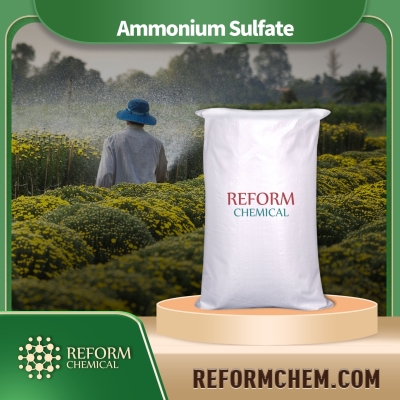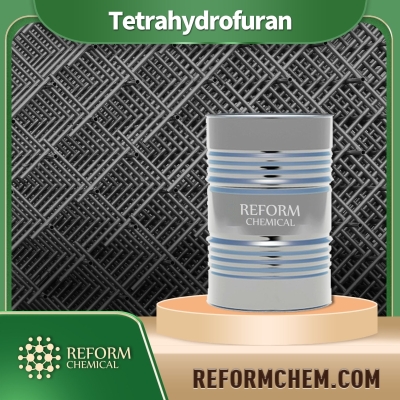-
Categories
-
Pharmaceutical Intermediates
-
Active Pharmaceutical Ingredients
-
Food Additives
- Industrial Coatings
- Agrochemicals
- Dyes and Pigments
- Surfactant
- Flavors and Fragrances
- Chemical Reagents
- Catalyst and Auxiliary
- Natural Products
- Inorganic Chemistry
-
Organic Chemistry
-
Biochemical Engineering
- Analytical Chemistry
-
Cosmetic Ingredient
- Water Treatment Chemical
-
Pharmaceutical Intermediates
Promotion
ECHEMI Mall
Wholesale
Weekly Price
Exhibition
News
-
Trade Service
The 2021 China Pesticide Industry High-quality Development Forum hosted by China Pesticide Industry Association closed last weekend in Yumen, Gansu
.
The information posted at the conference shows that the "dual carbon" strategy is on the line and the normalization of environmental protection supervision has put forward new and stricter requirements for the development of the pesticide industry, and has also made the shift of the eastern pesticide enterprises to the western region more obvious
.
Industry experts believe that continuously optimizing the industrial layout, focusing on innovation, speeding up the construction of a modern pesticide production system, and establishing new development and production models such as green raw materials, intelligent manufacturing, and improved formulations should become compulsory courses for pesticide companies moving to the west
.
According to data from the National Bureau of Statistics, the output of pesticide technical materials (100% equivalent) in China in 2020 is 2.
148 million tons, a decrease of 1.
1% over the previous year; in 2020, the main business income of 693 pesticide companies in the country is 228.
058 billion yuan, which is higher than the previous year.
The annual increase was 6.
1%; the total profit was 19.
062 billion yuan, an increase of 0.
5% over the previous year
.
Among the top three provinces in terms of pesticide output in 2020, the total output of pesticides in Jiangsu Province is 582,000 tons, the total output of Shandong Province is 285,000 tons, and the total output of Sichuan Province is 276,000 tons
.
Hunan Province, Gansu Province, and Ningxia Hui Autonomous Region have effectively released new production capacity, and their output increased by 30.
4%, 130.
2% and 33.
6% respectively over the previous year.
The shift of pesticide companies to the west has become more and more obvious
.
Li Zhonghua, executive vice president and secretary-general of the China Pesticide Industry Association, said that with the tightening of environmental protection policies in Jiangsu and Zhejiang, there is a clear trend for pesticide companies to invest in different places, and most of them are "traveling east" and "going west
.
" According to statistics from the association, pesticide companies have invested a total of 85 projects in different places, involving 73 companies (including 25 listed companies), with a total investment of 57.
4 billion yuan
.
Among them, 21 companies have invested more than 1 billion yuan, with an investment of 37.
83 billion yuan, accounting for 66% of the total investment in other places of the company.
The pesticide companies in Jiangsu, Zhejiang, and Shandong provinces have the most to go out, and most of the projects have been implemented.
Western Region
.
Among the 15 companies that invested in other places in Jiangsu, 4 were built in Gansu, 3 invested in Ningxia, and 2 invested in Inner Mongolia; 5 companies in Zhejiang invested in Inner Mongolia, Ningxia, Jilin and Sichuan; Shandong invested abroad Among the enterprises, three were built in Inner Mongolia and one was built in Gansu
.
"The flow of corporate funds involves 16 provinces, municipalities, and autonomous regions, mainly in the west, including western Inner Mongolia, Ningxia, Gansu, Shaanxi, Sichuan, and Chongqing.
A total of 41 companies have invested, accounting for 58% of the statistics
.
The largest investment is Inner Mongolia Autonomous Region has 15 companies, Wuhai and Alxa each have 6; Ningxia Hui Autonomous Region, with 9 companies investing; third is Gansu Province, with 7 companies investing
.
The hot spot for investment involves glufosinate Herbicides such as phosphine and glufosinate, insecticides such as acetamiprid and
flonicamid, and fungicides such as azoxystrobin and tebuconazole .
" Li Zhonghua said
.
Sun Shubao, chairman of the China Pesticide Industry Association, pointed out that the westward migration of pesticide companies in the eastern coastal areas has increased the pressure on environmental protection in the west, and the relocation of eastern companies to the west should not be a simple industrial transfer
.
The competition of new technologies such as genetically modified planting technology and the rapid development of smart agriculture have changed the use of pesticides.
All these require the pesticide industry to establish new development and production models such as green raw materials, smart manufacturing, and improved formulations
.
He said that industry associations have the responsibility to work with industry leaders, experts, enterprises and the western region to selectively introduce pesticides with advantages in the industrial chain, raise the safety and environmental protection threshold of local pesticide projects, and promote the growth of the pesticide industry in the Northwest and the whole country.
Quality development
.
Yan Duanxiang, deputy director of the Pesticide Inspection Institute of the Ministry of Agriculture and Rural Affairs, puts forward four suggestions for the development of pesticide companies in the west: first, unswervingly develop the real economy and agricultural industry; second, unswervingly promote the high-quality development of pesticides; third, unswervingly Move to further promote export growth; fourth, unswervingly promote the modernization process of the pesticide industry
.
.
The information posted at the conference shows that the "dual carbon" strategy is on the line and the normalization of environmental protection supervision has put forward new and stricter requirements for the development of the pesticide industry, and has also made the shift of the eastern pesticide enterprises to the western region more obvious
.
Industry experts believe that continuously optimizing the industrial layout, focusing on innovation, speeding up the construction of a modern pesticide production system, and establishing new development and production models such as green raw materials, intelligent manufacturing, and improved formulations should become compulsory courses for pesticide companies moving to the west
.
According to data from the National Bureau of Statistics, the output of pesticide technical materials (100% equivalent) in China in 2020 is 2.
148 million tons, a decrease of 1.
1% over the previous year; in 2020, the main business income of 693 pesticide companies in the country is 228.
058 billion yuan, which is higher than the previous year.
The annual increase was 6.
1%; the total profit was 19.
062 billion yuan, an increase of 0.
5% over the previous year
.
Among the top three provinces in terms of pesticide output in 2020, the total output of pesticides in Jiangsu Province is 582,000 tons, the total output of Shandong Province is 285,000 tons, and the total output of Sichuan Province is 276,000 tons
.
Hunan Province, Gansu Province, and Ningxia Hui Autonomous Region have effectively released new production capacity, and their output increased by 30.
4%, 130.
2% and 33.
6% respectively over the previous year.
The shift of pesticide companies to the west has become more and more obvious
.
Li Zhonghua, executive vice president and secretary-general of the China Pesticide Industry Association, said that with the tightening of environmental protection policies in Jiangsu and Zhejiang, there is a clear trend for pesticide companies to invest in different places, and most of them are "traveling east" and "going west
.
" According to statistics from the association, pesticide companies have invested a total of 85 projects in different places, involving 73 companies (including 25 listed companies), with a total investment of 57.
4 billion yuan
.
Among them, 21 companies have invested more than 1 billion yuan, with an investment of 37.
83 billion yuan, accounting for 66% of the total investment in other places of the company.
The pesticide companies in Jiangsu, Zhejiang, and Shandong provinces have the most to go out, and most of the projects have been implemented.
Western Region
.
Among the 15 companies that invested in other places in Jiangsu, 4 were built in Gansu, 3 invested in Ningxia, and 2 invested in Inner Mongolia; 5 companies in Zhejiang invested in Inner Mongolia, Ningxia, Jilin and Sichuan; Shandong invested abroad Among the enterprises, three were built in Inner Mongolia and one was built in Gansu
.
"The flow of corporate funds involves 16 provinces, municipalities, and autonomous regions, mainly in the west, including western Inner Mongolia, Ningxia, Gansu, Shaanxi, Sichuan, and Chongqing.
A total of 41 companies have invested, accounting for 58% of the statistics
.
The largest investment is Inner Mongolia Autonomous Region has 15 companies, Wuhai and Alxa each have 6; Ningxia Hui Autonomous Region, with 9 companies investing; third is Gansu Province, with 7 companies investing
.
The hot spot for investment involves glufosinate Herbicides such as phosphine and glufosinate, insecticides such as acetamiprid and
flonicamid, and fungicides such as azoxystrobin and tebuconazole .
" Li Zhonghua said
.
Sun Shubao, chairman of the China Pesticide Industry Association, pointed out that the westward migration of pesticide companies in the eastern coastal areas has increased the pressure on environmental protection in the west, and the relocation of eastern companies to the west should not be a simple industrial transfer
.
The competition of new technologies such as genetically modified planting technology and the rapid development of smart agriculture have changed the use of pesticides.
All these require the pesticide industry to establish new development and production models such as green raw materials, smart manufacturing, and improved formulations
.
He said that industry associations have the responsibility to work with industry leaders, experts, enterprises and the western region to selectively introduce pesticides with advantages in the industrial chain, raise the safety and environmental protection threshold of local pesticide projects, and promote the growth of the pesticide industry in the Northwest and the whole country.
Quality development
.
Yan Duanxiang, deputy director of the Pesticide Inspection Institute of the Ministry of Agriculture and Rural Affairs, puts forward four suggestions for the development of pesticide companies in the west: first, unswervingly develop the real economy and agricultural industry; second, unswervingly promote the high-quality development of pesticides; third, unswervingly Move to further promote export growth; fourth, unswervingly promote the modernization process of the pesticide industry
.






